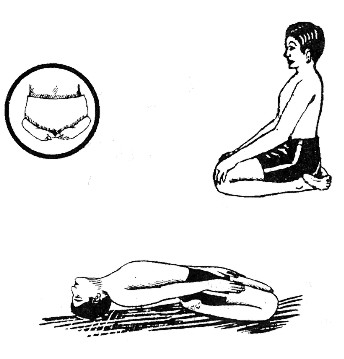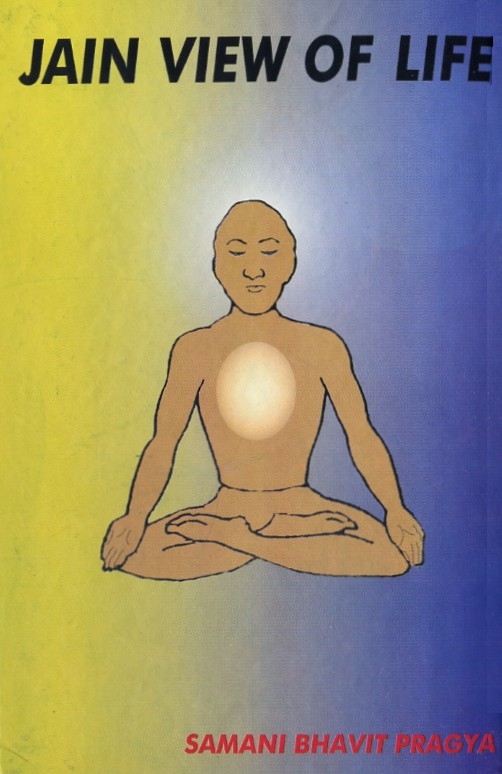Vajrasana (Adamantine pose) and Suptavajrasana
There is a vajra nerve in the body. By controlling that nerve through this asana, personal vigour is increased. In addition, vajra refers to the weapon of Indra. Through this practice the body becomes strong and vigorous.
Position:
This is a sitting posture. Bend the legs. Place them under the hips. The soles of the feet are facing back and upwards. The buttocks rest between the heels. Touch the toes to each other. Rest the hands on the knees. Keep the spine, neck and head erect. To perform Suptavajrasana, assume the previous position. Bend backwards using your hands for support. Place the head on the ground, keeping the neck relaxed. Keep the knees together. Rest the hands on the thighs. Breathe normally. To conclude the posture, turning to the left side with the support of your left hand, raise yourself up while exhaling. Return to the original vajrasana position.
Time:
Practice this posture as much as you can. After meals, perform this asana for at least ten minutes.
Benefits:
This asana activates the functions of digestion, develops memory power and increases energy of the brain. It helps in reducing sleepiness, hot temper, and excessive fat in the thighs. Due to increased circulation of blood, the thigh muscles, the backbone and shoulders tone up. In turn, all of those areas work in the right way.
 Samani Bhavit Pragya
Samani Bhavit Pragya

